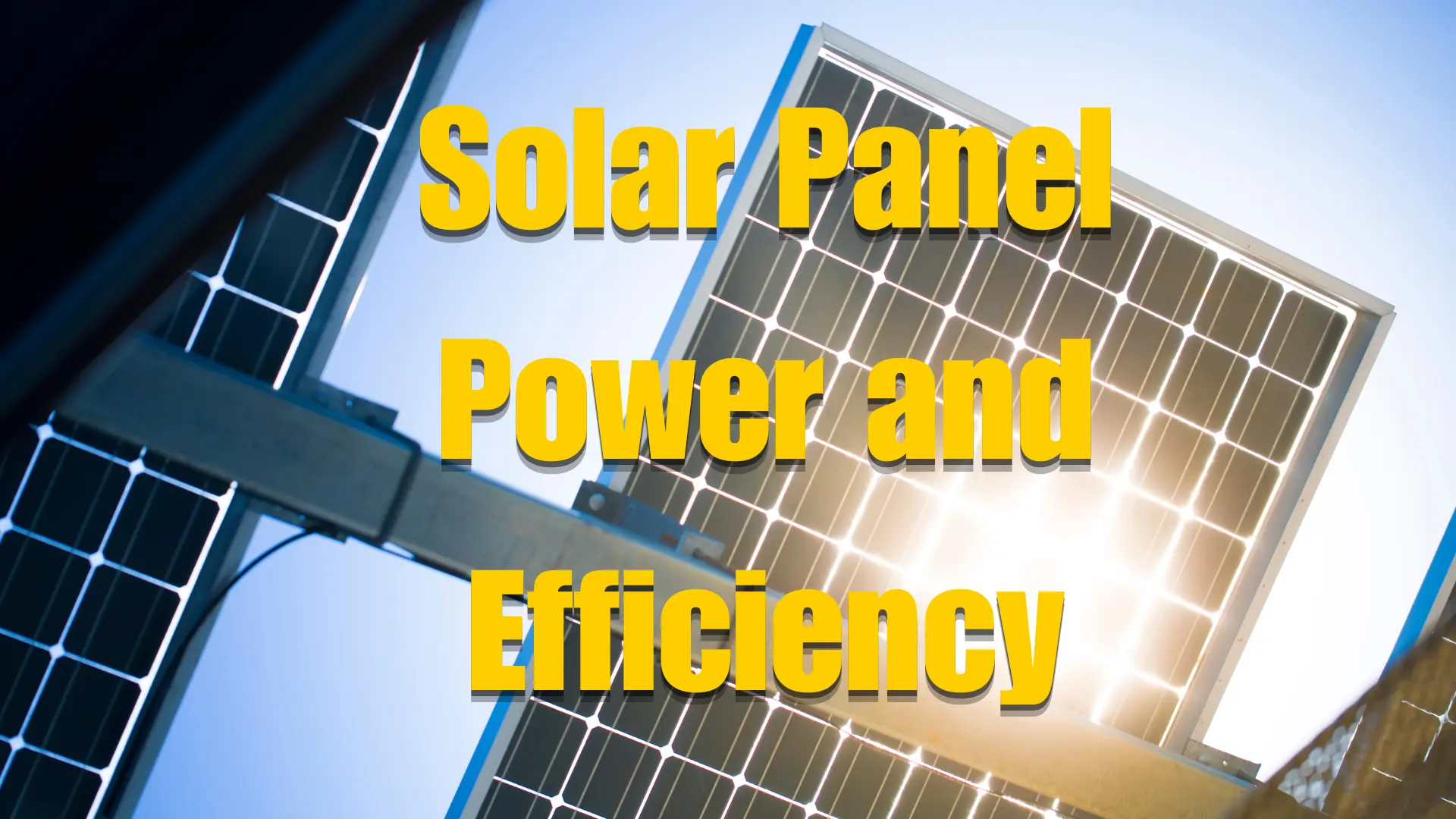How Much Power Does a Solar Panel Produce? | Maximize Efficiency & Save on Energy Costs

When discussing solar panels, we often ask, “How much power does a solar panel produce?” This is a good question, especially if you consider using solar energy for your home. If you want to estimate your load, use a solar calculator. In this article, we’ll look at how much power a solar panel can generate, what affects this power, and why it’s essential.
Solar Panel Power Real Production
The power a solar panel produces is measured in watts (W). A typical residential solar panel might produce about 250 to 400 watts. To make things clearer, let’s take a 500-watt solar panel as an example. If you have a 500-watt solar panel, it means that under ideal conditions, your panel can produce 500 watts of power every hour in direct sunlight.
So, if the sun shines on your panel for 5 hours a day, it can generate about 2500 watt-hours (Wh) of electricity. This is also known as 2.5 kilowatt-hours (kWh) because 1000 watt-hours equals 1 kilowatt-hour. Here’s a table that illustrates the power generation of a 500-watt solar panel under different durations of sunlight:
| Hours of Sunlight per Day | Power Generated (Wh) | Power Generated (kWh) |
|---|---|---|
| 1 | 500 | 0.5 |
| 2 | 1000 | 1 |
| 3 | 1500 | 1.5 |
| 4 | 2000 | 2 |
| 5 | 2500 | 2.5 |
| 6 | 3000 | 3 |
| 7 | 3500 | 3.5 |
| 8 | 4000 | 4 |
| 9 | 4500 | 4.5 |
| 10 | 5000 | 5 |
Factors Influencing Solar Panel Efficiency
Comprehending the factors influencing solar panel efficiency is crucial for maximizing their performance. Let’s delve into the key elements that affect how well your solar panels work.
Sunlight Exposure
The amount of sunlight your panels receive is the most significant factor in their efficiency. Panels need direct sunlight to produce maximum power. If shaded by trees, buildings, or debris, efficiency drops significantly. Ideally, panels should be placed where they receive uninterrupted sunlight most of the day.
Panel Orientation and Angle
The orientation and angle of installation are crucial. Panels facing south (in the Northern Hemisphere) usually get the most sunlight. The angle should be adjusted according to your latitude and the time of year to capture the maximum solar energy.
Temperature Effects
High temperatures can reduce solar panel efficiency. Excessive heat decreases the voltage output, lowering overall efficiency. Panels are typically tested at 25°C (77°F), and their efficiency can drop if the temperature rises above this level.
Quality of Solar Cells
Not all solar panels are the same. The quality of its solar cells dramatically influences the efficiency of a panel. Monocrystalline cells, for instance, are more efficient than polycrystalline cells. Cost of high-quality panels might be costlier initially but yields better efficiency and savings over time.
Inverter Efficiency
The inverter, which converts the direct current (DC) produced by the panels into alternating current (AC) used in your home, also affects efficiency. High-quality inverters reduce energy loss during conversion, ensuring you get the most power from your panels.
Maintenance and Cleanliness
Regular maintenance and cleaning are essential. Dirt, dust, bird droppings, and leaves can block sunlight, reducing output. Periodic cleaning and ensuring panels are obstruction-free help maintain efficiency.
Weather Conditions
Weather conditions also impact efficiency. Cloudy days, rain, and snow reduce sunlight reaching the panels. Although panels generate some electricity on overcast days, the output is significantly lower than on sunny days. Snow accumulation can block sunlight until it is cleared.
Maximizing Your Solar Panel Output
To get the most power from your solar panels, you can take several steps:
The Importance of Knowing Power Output
Understanding how much power a solar panel can produce helps determine how many panels you need to meet your energy needs. For example, if your home uses 30 kWh of electricity each day, and you have 500-watt panels that get 5 hours of sunlight a day, you would need about 12 panels to cover your daily energy use.
Advantages of Using Solar Panels
Real-Life Examples
Conclusion
So, “How much power does a solar panel produce?” A typical solar panel can produce between 250 and 400 watts, with some panels, like a 500-watt panel, generating even more. This power output can vary based on sunlight exposure, panel angle, temperature, and shading. Knowing the power output is essential for planning your solar energy system and enjoying the benefits of renewable, cost-effective, and environmentally friendly energy.
